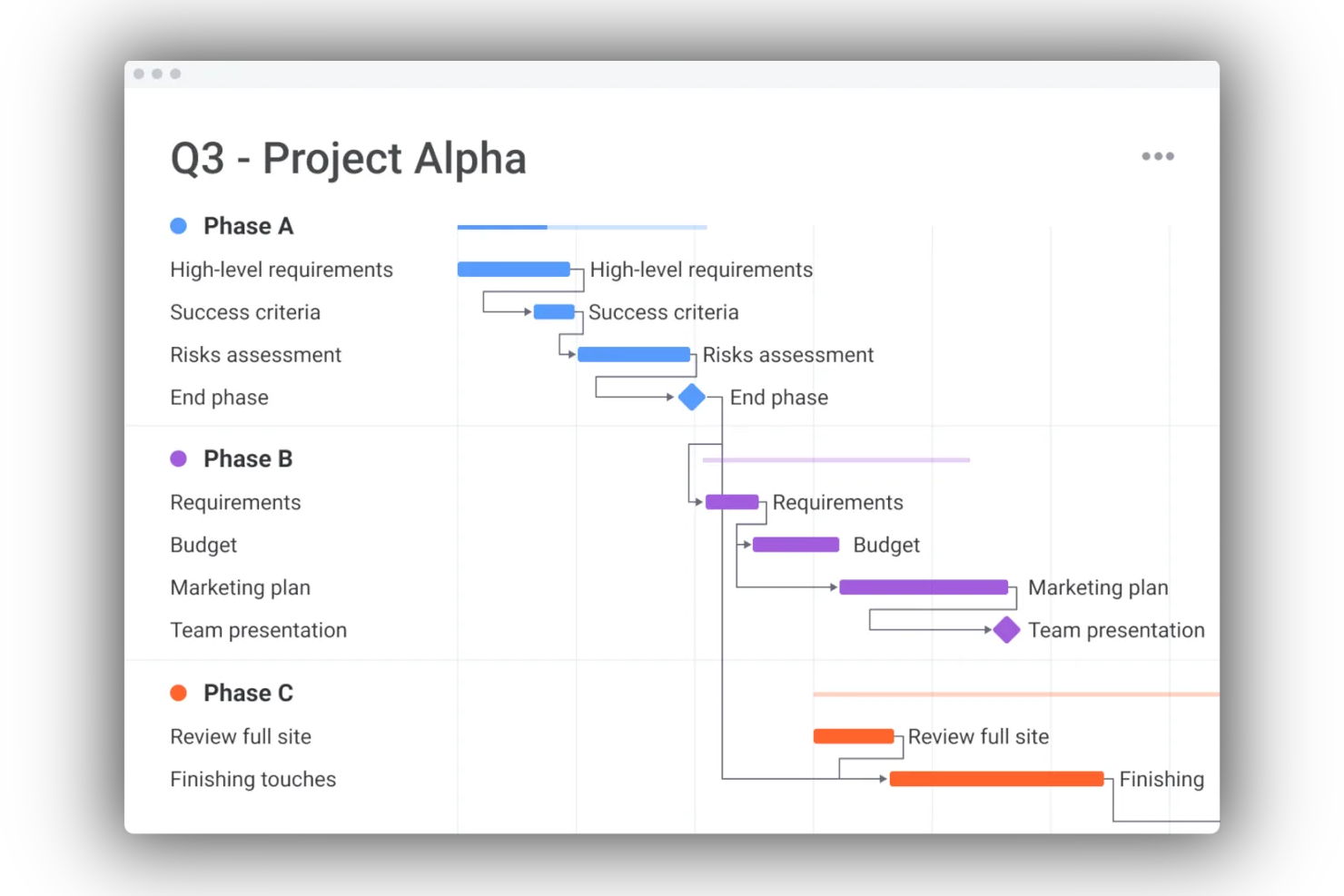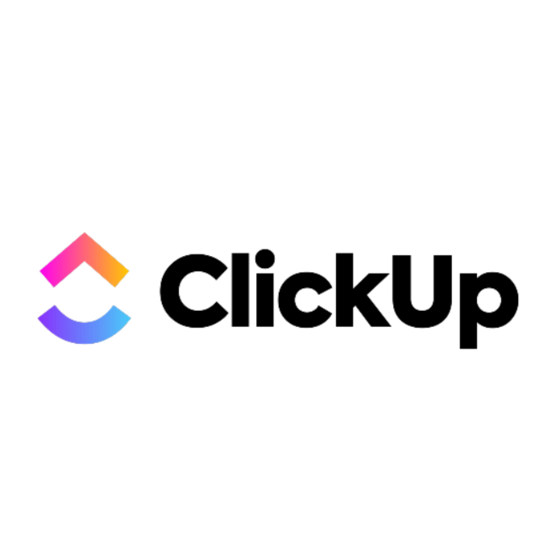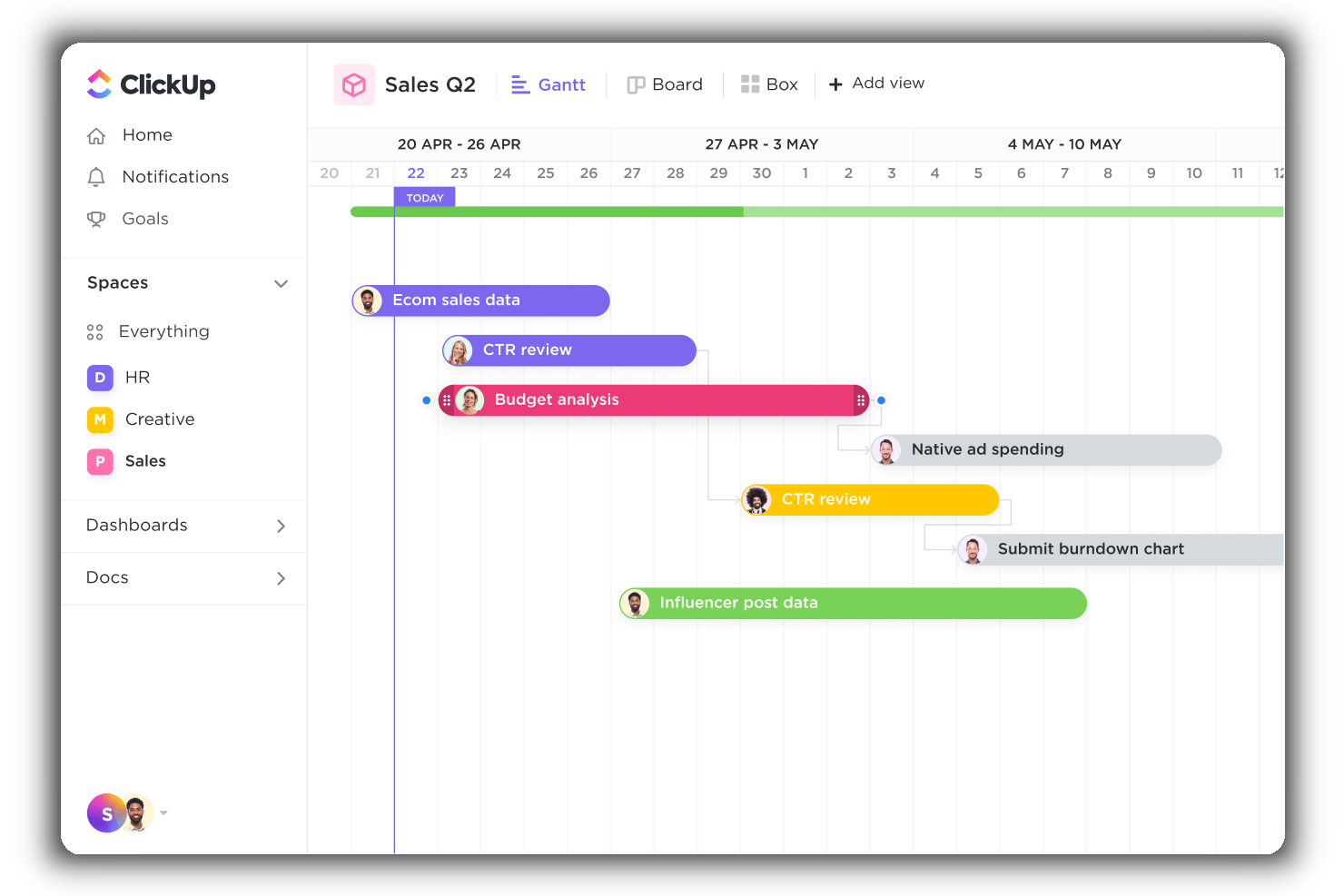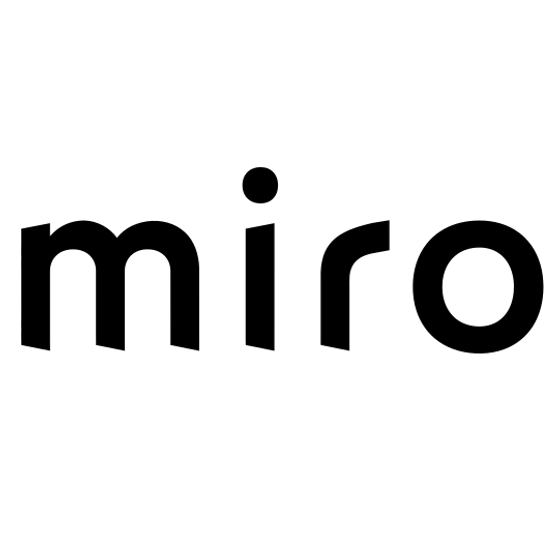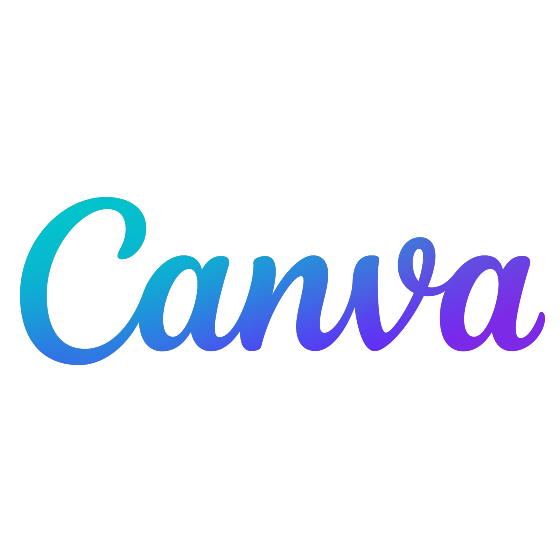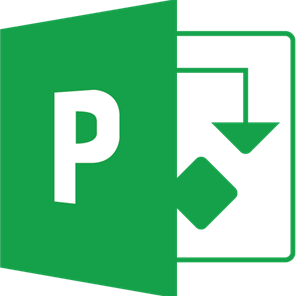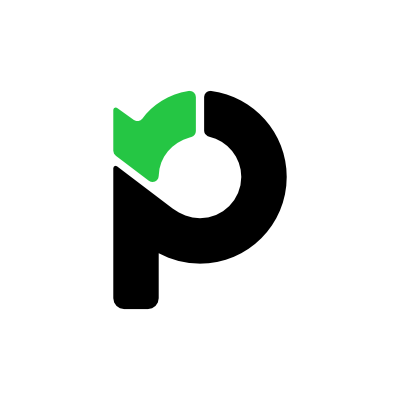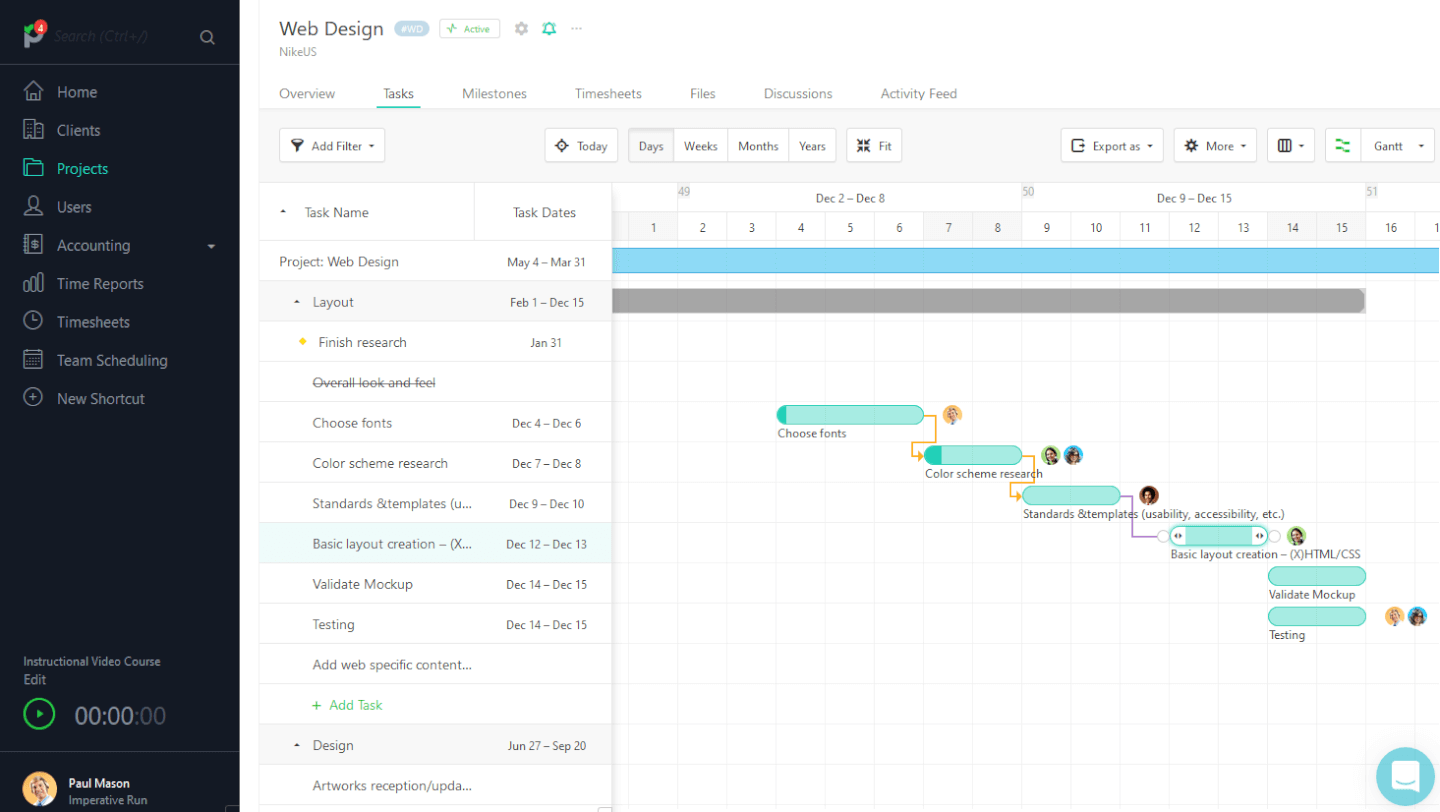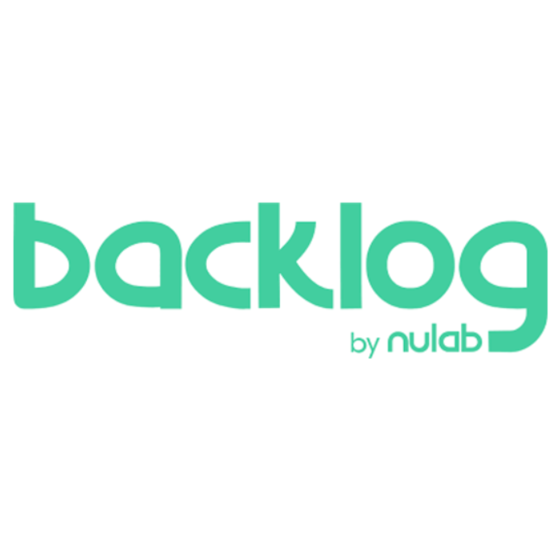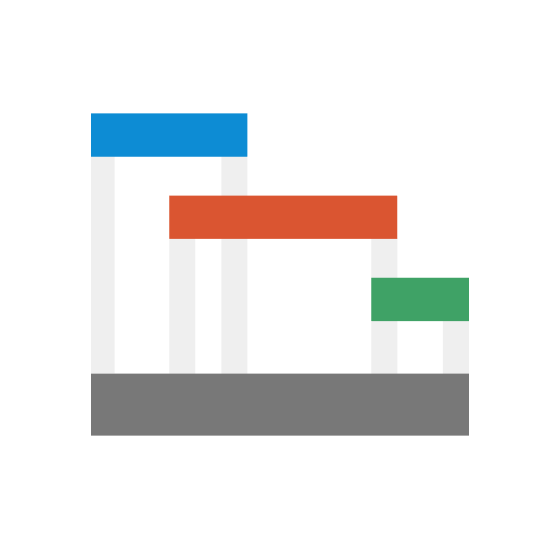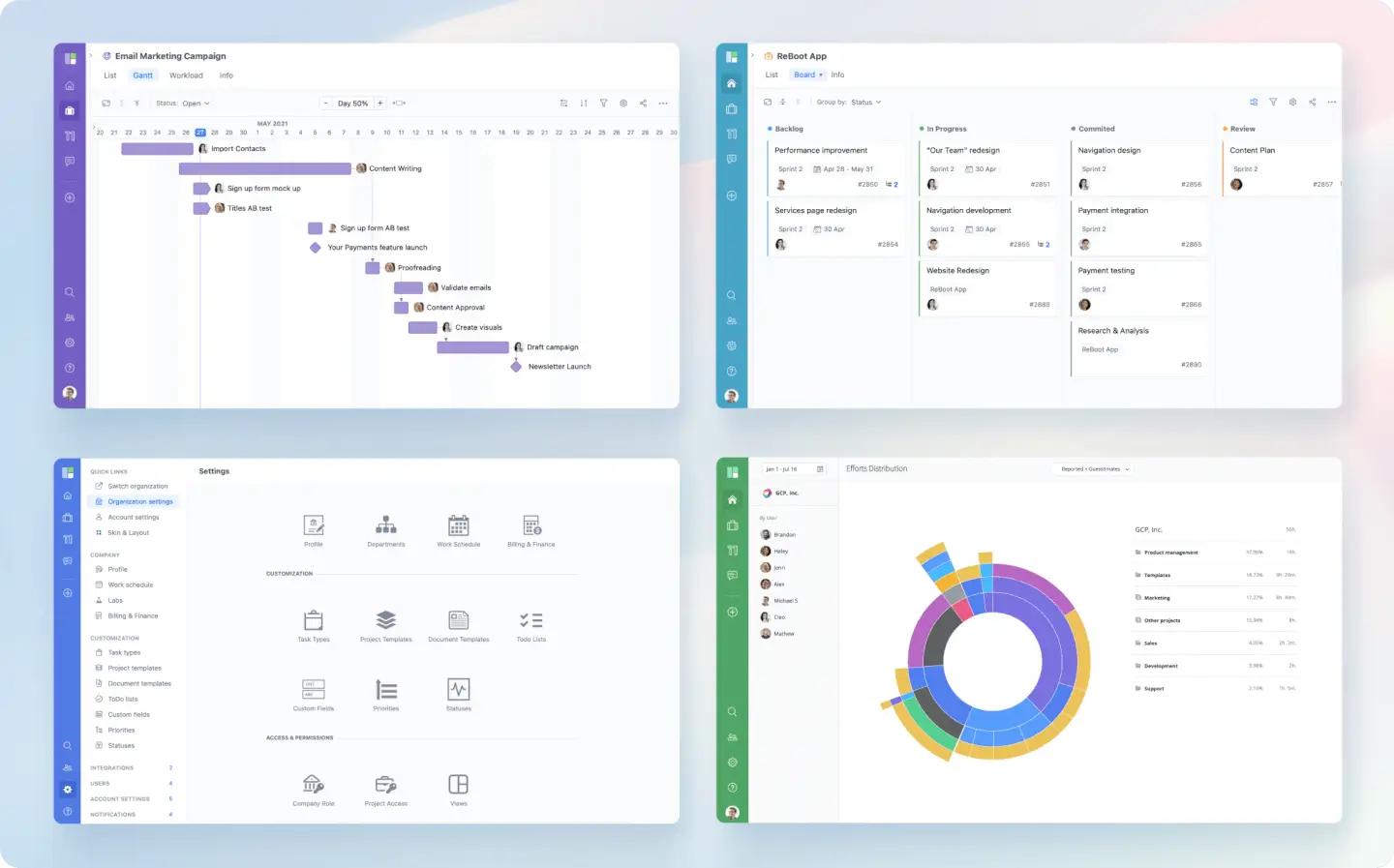10 Best Gantt Chart Software List
Here's my pick of the 10 best software from the 20 tools reviewed.
Get free help from our project management software advisors to find your match.
With so many different Gantt chart software solutions available, figuring out which is right for you is tough. You know you want to enable the creation and management of Gantt charts for project planning and tracking but need to figure out which tool is best. I've got you! In this post I'll help make your choice easy, sharing my personal experiences using dozens of different Gantt chart tools with various teams and projects, with my picks of the best Gantt chart software.
What Is Gantt Chart Software?
Gantt chart software is a tool for project management that displays tasks along a timeline. It shows the start and end dates of tasks, their duration, and how they interact with each other in a project. This software visualizes project schedules, making it easier to understand complex task relationships and timelines.
The benefits of using Gantt chart tools include improved project planning and tracking. They enhance visibility into project timelines and dependencies, aid in efficient resource allocation, and facilitate better team collaboration. The software also allows for quick adjustments to project plans, helping to identify and mitigate potential delays, and serves as a useful tool for communicating project status to stakeholders.
Overviews Of The 10 Best Gantt Chart Software
Here’s a brief description of each of the Gantt chart software on my list showing what it does best. Feel free to check out how I picked the software on this list at any time.
Best Gantt chart software for task management & collaboration
monday.com is a provider of multiple software solutions, covering different aspects of business processes, from creative and design, software development, and marketing to project management, sales and CRM, as well as HR and task management. With a work management suite, monday.com can facilitate many things related to project planning and resource tracking. Gantt charts are just one of the core features available in their project management software suite.
Why I Picked monday.com: monday.com’s Gantt charts software solution provides project managers and teams with a quick overview of their project timeline. It lets them see upcoming deadlines on tasks and projects and keep track of the status of multiple active tasks in real time. Creating Gantt charts with monday.com project management software is relatively easy. Users can customize the charts in minutes to facilitate the needs of their team. They even have the ability to take their Gantt charts on the go and remain up to date on project progress using monday.com’s mobile app.
Gantt charts that are created on monday.com will often begin with a dynamic table view, allowing users to add all important information related to the current or upcoming project. While Gantt charts are extremely useful for monitoring project progress, they don’t necessarily work for everyone. This is why monday.com doesn’t rely on Gantt charts alone to visualize project timelines. The platform also provides Kanban board and calendar views.
Although monday.com offer a freemium plan, this does not include Gantt charts so it will not be sufficient for your needs. Instead, use their free trial to test out the software.
monday.com Standout Features & Integrations
Features include project management, task scheduling/tracking, resource management, scheduling, budgeting, API, calendar management, Gantt charts, file sharing, time management, email integration, third party plugins, and notifications.
Integrations include project management apps like Slack, Google Drive, Gmail, Google Calendar, Jira, GitHub, Trello, Dropbox, Typeform and many more, accessible through a paid plan with Zapier.
ClickUp
Best for its easy and intuitive timeline with drag-and-drop functionality
ClickUp is a cloud-based project management and collaboration app that is highly customizable and enables you and your teams to manage everything from within a central platform, including project-related tasks, team communications, documents, and goals.
Why I Picked ClickUp
ClickUp has an intuitive Gantt view that enables you to manage dependencies, schedule, and prioritize elements into a clear project timeline. This view offers a dynamic drag-and-drop timeline to easily schedule multiple tasks, keep track of project progress, manage deadlines, and handle potential bottlenecks.
Additionally, it provides users with a bird’s eye view of all active projects, spaces, lists, and tasks. It uses a color-coding system, so you and your stakeholders can instantly know what’s happening when and where. Finally, you can use timeline filters to arrange the information by assignee, due date, status, and more.
ClickUp Standout Features & Integrations
Features include task scheduling/tracking, project management, resource management, budgeting, contact management, data visualizations, employee database, expense tracking, file sharing, third-party plugins, collaboration support, timesheets, roadmapping, chat, customer management, email integration, feedback management, and process reporting.
Integrations include native integrations with Slack, Google Workspace, Dropbox, and many more tools, as well as over 1,000+ integrations through Zapier (may incur additional costs).
Miro is a collaborative online whiteboard tailored for creating Gantt charts, among other visual planning tools. Its infinite canvas supports a broad expression of ideas, whether through text, images, or videos, facilitating detailed and accessible project visualizations.
Why I Picked Miro: Miro is designed for real-time collaboration and comes equipped with tools such as voting, sticky notes, and comments. This approach enables teams to adjust and discuss plans directly within the workspace and encourages active participation and immediate feedback among team members.
Moreover, Miro stands out by allowing users to upload and build upon existing charts from various platforms, ensuring no previous work is lost during the transition. This ensures seamless integration into Miro’s interactive space, allowing further development and fostering continuous workflow and collaboration without the need to start over.
Miro Standout Features & Integrations
Features include over 1,000 pre-made templates or various uses such as Gantt charts, Kanban boards, and mind maps, built-in communication tools, including video conferencing and TalkTrack to record process videos to be viewed asynchronously, as well as quick diagram tools, a planner tool, and a dependencies app.
Integrations include Zoom, Figma, Asana, Microsoft Teams, Monday.com, Confluence, Jira, Slack, Google Drive, Box, Airtable, Notion, Azure, and Webex. Some integrations are limited to paid plans only.
Miro is free to use for unlimited members with up to 3 editable boards. Paid plans start at $8/user/month (billed annually).
Pros and cons
Pros:
- Free forever plan available
- Intuitive and easy setup
- Built-in communication features for streamlined collaboration
Cons:
- Visitor/guest accounts locked to paid plans only
- Zooming can be jumpy on larger projects
- Free version does not allow high-quality export to pdf
Canva is a Gantt chart maker and design program with over 1 million free shapes and photos in their asset library and hundreds of thousands of product templates. Canva does more than just Gantt charts: You’ll find templates for slideshows, presentations, infographics, graphs, emails, and more. They have a simple drag-and-drop interface that makes it easy for non-designers to create aesthetically pleasing designs with minimal effort.
Why I Picked Canva: They offer quite a bit for their price, per our evaluation criteria, but free users won’t have access to everything. While Canva is free to tinker with, it will cost you to use certain designs, shapes, patterns, and templates. It will also cost you to download your work in any functional format (besides a mere screenshot). Still, the price is ideal for smaller businesses that are looking for Gantt charts along with other marketing graphics but don’t have a budget for an in-house designer.
Furthermore, if the only thing you need is Gantt charts then Canva doesn’t offer the range of robust data detailing that other programs do. Rather, it’s strength comes from the clean simplicity of its designs. If your project requires an in-depth, multifaceted timetable, Canva probably won’t be for you.
Canva Standout Features & Integrations
Features include Gantt chart templates, whiteboards, presentations, social media integration, video, print products, marketing, drag-and-drop editor, photos & graphics library, collaboration, and third-party integrations/plugins.
Integrations include WordPress, eClincher, Rippling, Sendible, Post Planner, and Viraltag. As you can probably tell, their focus with integration is on social media and/or content creation – if you need to access PM or workflow apps, you’re out of luck.
Microsoft Project Online uses a familiar software UI to give you an intuitive way to visualize various project angles. MS Project Online is a great example of Gantt chart template software, offering loads of built-in templates and familiar scheduling tools that make it easy to launch and navigate each assignment. The Gantt chart builder lets you select items for phase indicators, start and end dates, and RAG risk status.
Why I Picked Microsoft Project Online: Unlike some of the other software on this list, MS Projects doesn't have the same number of features and functions despite the higher licensing cost for the full suite of tools. Therefore, they fall short in our value for money spend evaluation criteria, meaning they aren’t the best for small business or startups.
Collaboration is limited by the fact that a project file cannot be opened by multiple team members at the same time. Changing schedule dates is not as seamless as it should be and often ends up causing chaos across the timeline. MS Projects is definitely geared towards large-scale projects and might not work for smaller workflows.
Microsoft Project Online Standout Features & Integrations
Features include project management, resource management, task management, scheduling, portfolio management, dynamic scheduling, business intelligence, Gantt charts, kanban boards, collaboration, reporting, roadmaps, timesheets, and demand management.
Integrations include MS Office suite, OneDrive, Outlook, Skype, and OneNote.
Paymo is a work management tool designed to help creative and marketing teams own their entire project cycle. As well as Gantt Charts, they also offer task management, time tracking, resource scheduling, and invoicing modules that are well integrated with each other.
Why I Picked Paymo: Within Gantt charts, users can click and drag on the timeline to estimate a task duration, then pinch its ends to extend or shorten it. Apart from the standard dependencies, you can set lead and lag time to account for overlaps or delays, and even auto-schedule tasks based on those dependencies and constraints. When finished, click the Export button to save the project timeline and send it over to a client or team member. There’s also a Portfolio Gantt Chart available, which acts as a pipeline with all project timelines united on a single screen.
The tool could benefit from having a baseline feature to compare against future changes of the task and overall project duration. Milestones could also be more customizable, as they currently show up only under their corresponding task lists.
Paymo Standout Features & Integrations
Features include time tracking, task management, budget tracking, resource management, collaboration, Gantt charts, reporting & analytics, invoicing, mobile app, customizations, and third-party integrations.
Integrations include popular apps such as Slack, Adobe Creative Cloud, Google Drive, QuickBooks Online, Xero, JotForm, Shift, to name a few. Other integrations are available through Zapier or by syncing with their fully-documented API.
Backlog is a cloud-based project management tool perfect for developers and the teams they collaborate with. Backlog provides a mobile app on both iOS and Android for collaborating on-the-go.
Why I Picked Backlog: Backlog provides a range of useful team collaboration features including task management (including subtasks, checklists, and custom fields), milestones, burndown charts, file management, wikis, and most importantly, a Gantt chart maker. But Backlog is more than a collaboration and Gantt chart tool. It’s also a bug tracker and version control system in one.
For collaborating on code, Backlog provides SVN and Git repositories, a differences viewer and inline comments, plus pull requests, merge requests, and branches. Visually, the app provides burndown charts, Git graphs, and Gantt charts, so project managers and users alike can quickly assess projects at a glance.
Backlog allows you to assign, track, and release work, right in one app while ensuring transparency and accountability across teams. If you’re looking for a tool to help manage development projects or working closely with a team of developers, this is the app for you.
Backlog Standout Features & Integrations
Features include Gantt charts, boards, burndown charts, issue tracking, custom fields, milestones, versioning, notifications & alerts, code management, documentation management, file sharing, and third-party integrations/plugins.
Integrations include Typetalk, Cacoo, Nulab Pass, Slack, Redmine, Jira Importer, Jenkins, iCal Sync, email platforms, Google Sheets, and LambdaTest. You can also build your own integrations and add-ons with Backlog's API.
Best for creating Gantt charts and timelines directly in PowerPoint
Office timeline is a project planning tool that enables users to create visually appealing timelines and Gantt charts directly within Microsoft PowerPoint or through its web-based tool. It also allows you import data directly from Excel and access a wide variety of customizable templates.
Why I picked Office Timeline: Office Timeline integrates smoothly with essential tools like MS Project, Excel, and PowerPoint, making your data visualizations not just easy but efficient. It also stands out for its dual offering of a PowerPoint add-in and a web-based tool, catering to different user preferences and project needs.
You'll love the intuitive design and customizable templates that let you create professional-looking project visuals without needing to be a design whiz. This tool makes your project management tasks as straightforward as possible, allowing you to focus more on the project and less on the process of reporting it.
Office Timeline Standout Features & Integrations
Features include the desktop add-in which offers a variety of customizable templates for timelines, Gantt charts, and roadmaps, while the online version facilitates quick creation and sharing of project visuals from any web-enabled device. The software's vast array of design options and templates allows users to tailor their project timelines to the audience's needs, whether for high-level executive briefings or detailed team updates.
Integrations include tools like Jira, Project, Excel, and Smartsheet. These let you import data and manipulate it so you can get the PowerPoint visuals you need for your stakeholder presentations
Pros and cons
Pros:
- Free, customizable templates
- Intuitive and easy to use
- Directly integrates Microsoft PowerPoint
Cons:
- Dependency on Microsoft ecosystem can be limiting
- Inflexible pricing options
GoodDay is a work management platform for building Gantt charts to plan projects, allocate resources, and manage tasks, subprojects, events, and dependencies. It’s an affordable all-in-one tool for project management, tasks collaboration, planning, reporting, and productivity with an easy-to-use interface.
GoodDay lets you customize Gantt chart views, columns, the user interface, fields, task types, project templates, and priorities. Additional functionalities include auto-zoom, export to PDF, and filtering.
GoodDay integrates with hundreds of apps such as Google Drive, Google Calendar, Gmail, Slack, GitHub, Gitlab, Excel, Jira, Trello, and many others, accessible via native integration. More integrations are available through Zapier and GoodDay Api.
GoodDay costs from $4/user/month and offers a free-forever version for up to 15-user teams.
Vault ERP is an enterprise resource planning (ERP) system that allows users to streamline their business processes. It can also be used as powerful Gantt chart software for project management. Gantt charts are used to illustrate the timeline and progress of a project, and Vault ERP provides the tools necessary for effective visualization.
Why I Picked Vault ERP: Using Vault ERP as Gantt chart software is easy and intuitive. With just a few clicks, users can quickly create tasks, add milestones, set dependencies, or assign resources to team members. The software also supports multiple projects in one view so that users can compare timelines side-by-side with ease. Moreover, Vault ERP's interactive dashboard feature makes it possible to visualize data trends in real-time with minimal effort.
Vault ERP is hugely scalable as a Gantt chart solution. This is because you can mix and match your subscription to include other workforce management modules like recruitment, time tracking, leave management, onboarding, asset management, client management, and more. Most companies need more than just a Gantt chart for their company management and Vault ERP can accommodate with additional solutions for HR, invoicing, and skill building.
Vault ERP Standout Features & Integrations
Features include Gantt charts, resource management, project management, attendance tracking, calendar management, customer management, employee database, external integrations, notifications, task scheduling/tracking, timesheets, time management, collaboration support, batch permissions & access, dashboards, data visualization, scheduling, workflow management, budgeting, expense tracking, forecasting, payroll, supplier management, and vacation & absence calendar.
Integrations include Unfuddle, Microsoft Azure, Jira, GitHub, Basecamp, Google Apps, Logmill, Wufoo, Trello, Microsoft Active Directory, NodeBB, and Tempo.
The Best Gantt Chart Software Comparison Chart
It’s easy to be overwhelmed by the baffling array of Gantt chart software out there. Below, we’ve put together a reader-friendly table neatly summarizing basic info about the tools described in this article.
| Tools | Price | |
|---|---|---|
| monday.com | From $8/user/month (billed annually, min 3 seats) | Website |
| ClickUp | From $7/user/month | Website |
| Miro | From $10/user/month | Website |
| Canva | From $14.99/user/month | Website |
| Microsoft Project | From $10/user/month (billed annually). | Website |
| Paymo | From $5.95/user/month | Website |
| Backlog | From $35/month for up to 30 users | Website |
| Office Timeline | From $149/license/year | Website |
| GoodDay | From $6/user/month | Website |
| Vault ERP | From $450/month | Website |

Compare Software Specs Side by Side
Use our comparison chart to review and evaluate software specs side-by-side.
Compare SoftwareOther Options
Here are a few additional apps that did not make the top 10, but are worth your consideration if you want to expand your research.
- TeamGantt
Best online Gantt chart software
- Height
Best for cross-functional workload prioritization
- GanttPRO
Best Gantt chart software for workload visualization
- Smartsheet
Best for Gantt chart templates
- Productive
Best for all-in-one agency management & planning
- airfocus
Best for project prioritization
- Wrike
Best collaborative Gantt chart software
- Instagantt
Best add-on for Asana users
- Hub Planner
Best Gantt chart software with integrated time tracking & approval
- Visor
Best for creating Gantt charts collaboratively
How I Selected the Best Gantt Chart Software
First, I started with Gantt chart software with high user reviews and satisfaction ratings. Then, using my experience in project management, I discerned what key criteria were most important for Gantt chart software and compared how each of them stacked up against the rest.
After careful consideration, I've determined that these are the most important criteria when selecting the best Gantt chart software. Here's a brief list outlining the whats and whys of my evaluation.
User Interface (UI)
Online Gantt chart software UI needs to help you quickly visualize a projects critical path, tasks, progress, and track projects. The proper use of white space and a proper UI element distribution will help you be more productive simply by making you faster. This is especially true for complex projects that have tons of information to look through.
Usability
Modern software will swap out complex calculations and formulas for interactive Gantt charts with drag-and-drop, point-and-click mechanics. Also, it's equally important to learn to use the rest of the software and decrease that learning curve. Therefore, I look for information on how the tool supports you in mastering the software. This includes training material, learning academies, videos, and knowledge bases.
Integrations
Gantt charts are typically just one element of a larger work world, so it’s important that these tools connect to the software you are already using for project management, communication, time tracking, collaboration, agile workflows, and other tools that are part of a complete project management software solution.
Pricing
I’m looking for software that is fairly priced for what they offer and ideally scalable as your company grows. Transparency in pricing terms and what different subscription tiers have to offer the user is key.
What are the key features of Gantt chart software?
- Gantt chart template: Starting from scratch is all fine and dandy but there should be some basic Gantt chart templates available for users who want to hit the ground running.
- Task management: For a Gantt chart to be useful, your team will want to be able to visualize the tasks needed to complete each stage and have real-time updates on progress.
- Task dependencies: Every Gantt chart tool should have a way to mark dependencies (AKA: Task B cannot progress until Task A is done).
- Work-breakdown structure (WBS): There has to be some way to break down huge objectives into smaller, manageable tasks—otherwise, your charts are going to start looking like pretty calendars with no intrinsic value day-to-day.
- Project progress: I’m looking for some way to visualize or communicate the project process, ideally in a way that lets you slice and dice the data in a variety of ways.
- Project insight stats: It’s always super handy when your Gantt chart software can flag ROG status or capacity warnings. Any above-and-beyond insights are welcomed.
- Multiple projects: Some Gantt chart software may only let you manage one project while others let you manage unlimited projects. Only you can know what you need at the end of the day but I’m going to try my best to highlight the maximum capacity of each tool.
Gantt Chart Software FAQs
What is Gantt chart software?
Gantt chart software is software that has the capability to generate Gantt charts. Different Gantt chart software vendors offer different features for planning project tasks and objectives.
A Gantt chart is simply a fancy term for a visual representation of project activities, timelines, and dependencies.
Learn more about the project types that benefit from Gantt chart software.
What should a Gantt chart include?
The best Gantt chart software will include the ability to create horizontal bar charts that depict the timeline of a project’s schedule, the overlay of interdependent tasks (i.e. Task B cannot start until Task A is finished), time estimates, a schedule progress status, and team assignments. Most modern Gantt chart programs also have task management and collaboration features as well.
More on what a Gantt chart should include here.
What is a Gantt chart used for?
Henry Gantt developed the first Gantt chart as a way to plan production and factory resource loading around the turn of the 19th Century. And we still use Gantt charts to this day for resource tracking, deadline plotting, and project communication. A good Gantt chart should visualize the relationship between the work to be done and plotted over a set period of time. It will flag the intended start and due date of tasks and subtasks, dependencies between different pieces of work, and plot who is responsible for each item.
We go into more detail about it here: What Is A Gantt Chart, And Why Is It Used?
How do you create a Gantt chart?
Great question! You can follow our step-by-step guide to learn exactly how to create a Gantt chart if you are coming at it for the first time. If you’ve made Gantt charts before and are looking for tips and tricks, try: Elements To Include In A Gantt Chart + Other Gantt Chart Tips.
Is there a Gantt chart in Excel?
Not really but you can build your own or snag a Gantt chart template for Microsoft Excel online. I wouldn’t recommend this approach, though, as it is a ton of manual input for very little benefit. If one project element changes, you have to manually change every step afterward or craft a formula to do so for you.
If you are in the Microsoft ecosystem and loving it, check out MS Projects. You’ll get the familiar look and feel of Excel and other Microsoft platforms with a Gantt chart builder, project management tools, and more
What is the best free Gantt chart software?
The most common free Gantt chart software is probably Excel or Google Sheets. You’ll find templates for creating Gantt charts in those programs if you do a search online, although the templates might cost a few bucks. It works in a pinch, but it’s not great.
Or, you can try a free tool like ClickUp, which offers 100 Gantt charts for free on their basic level plan. There are many other free and open-source Gantt chart software options available online, including RedBooth, GanttProject, Bitrix24, Agantty, Teamweek, and Instagantt for Asana, as well as free versions of paid tools such as Wrike, Paymo, and others.
For more options, read our full list of free Gantt chart software.
What's Next?
Gantt charts are just one way that you can track how you spend your time, set priorities, plan ahead, stay organized, schedule time, and delegate—all key features of a master of time management. Since you are dealing with timelines, I recommend you learn about the critical path method and why it's important.
Related tool lists:
- Best Project Scheduling Software
- Best Gantt Chart Maker Options To Help You Plan
- Project Management Software You Need
Don’t forget to subscribe to The Digital Project Manager newsletter for more on project management tools and trends.




